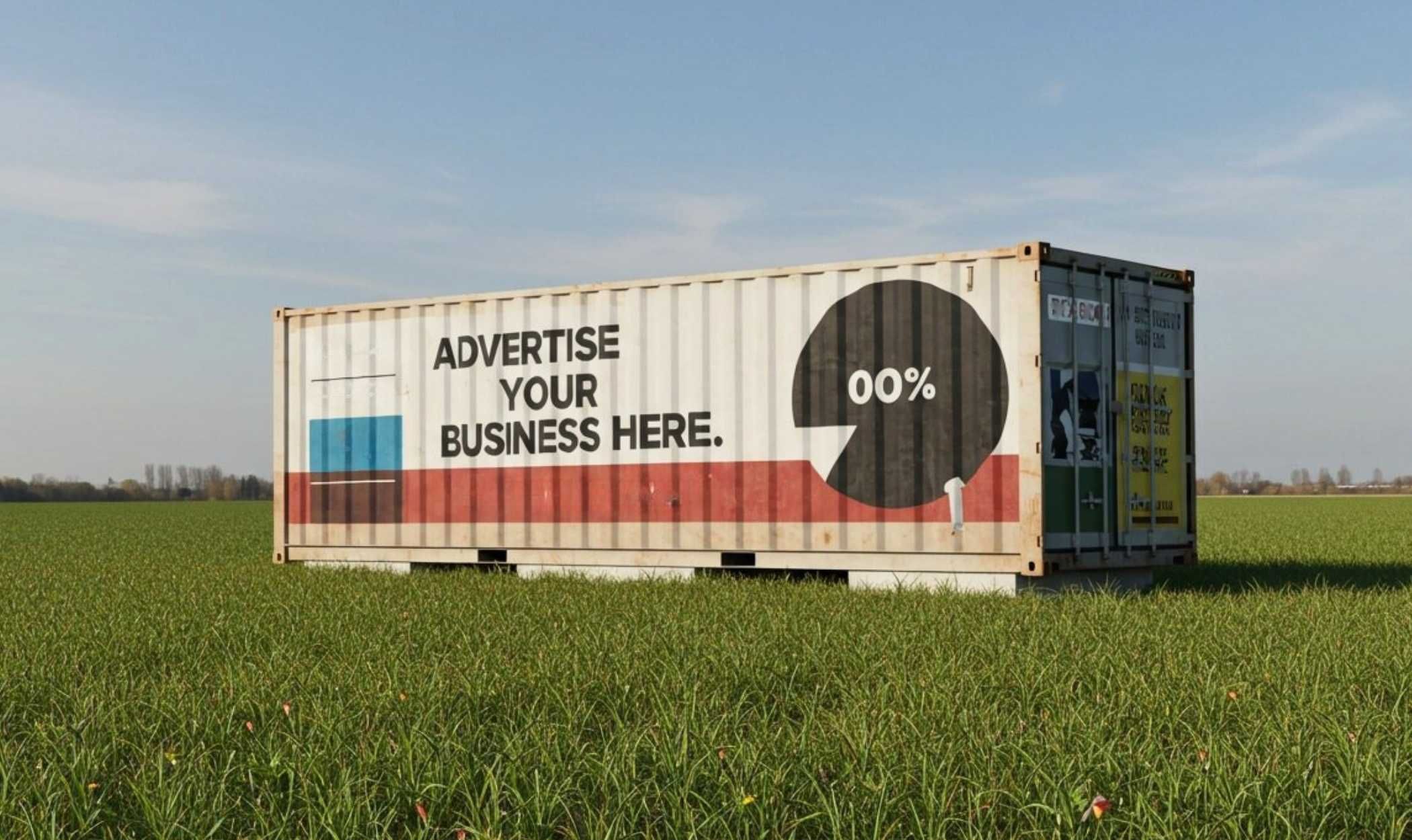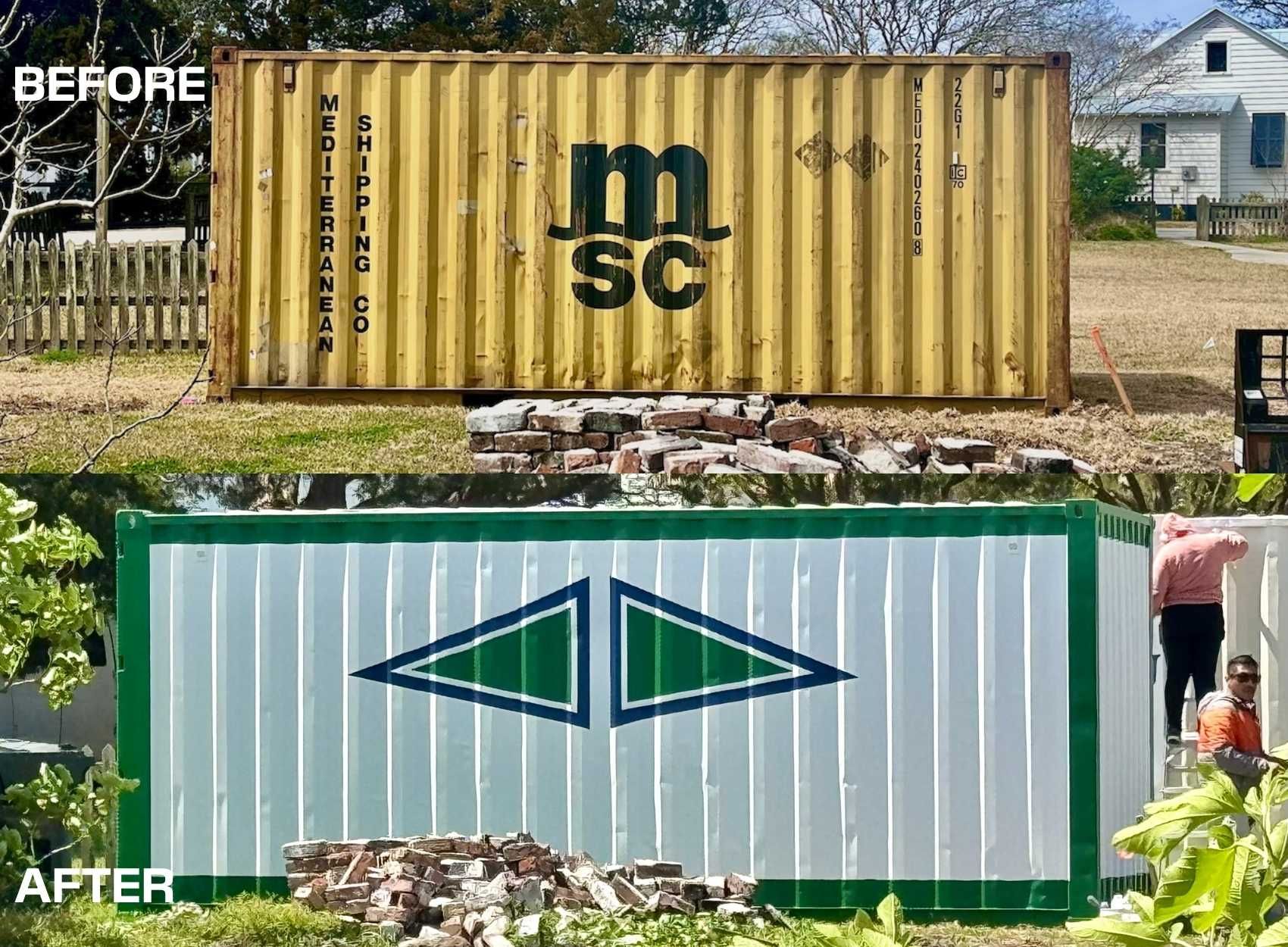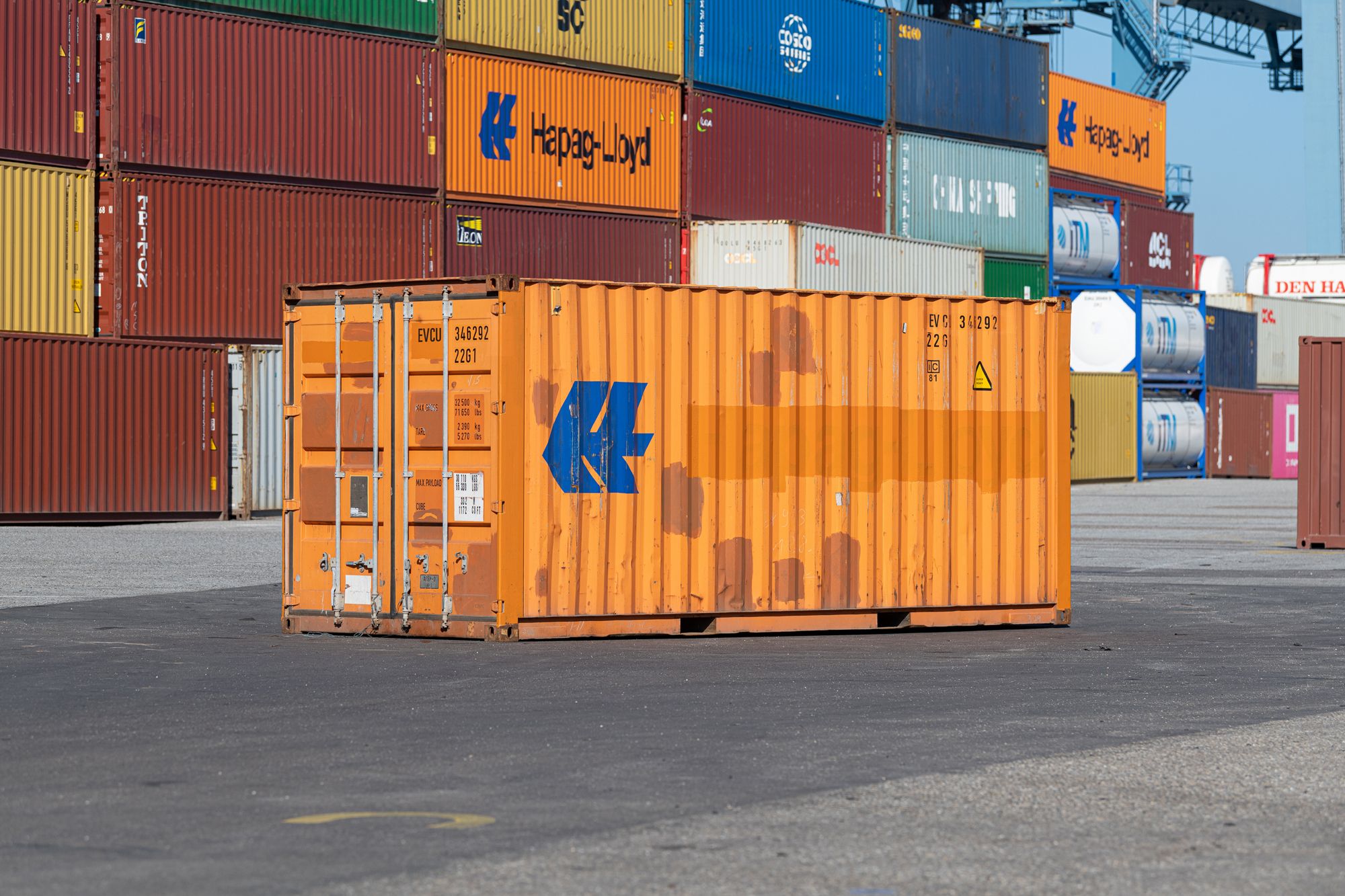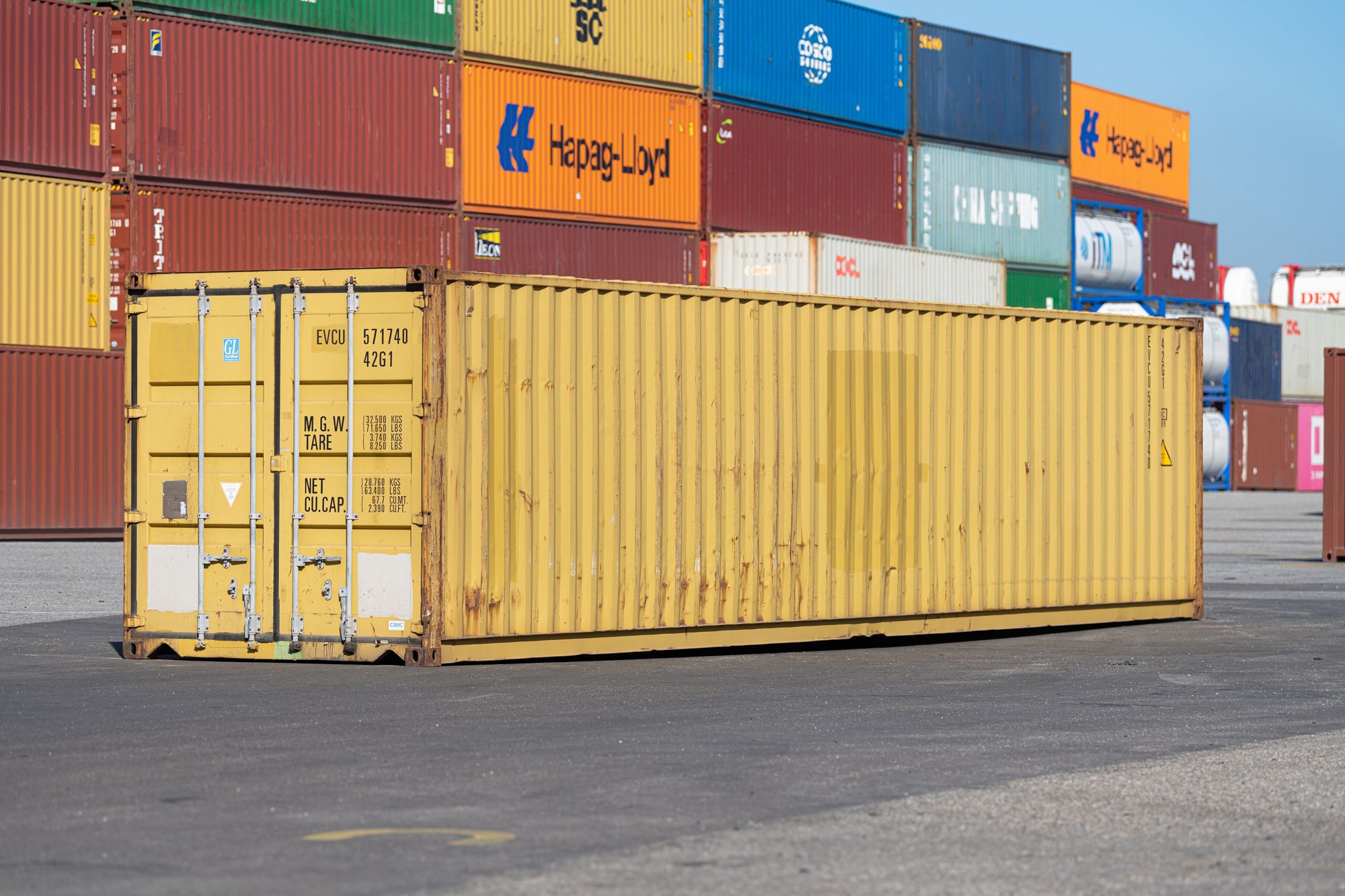SPRING SALE: Receive $100 Off Per Container
The Future of Outdoor Advertising with Portable Billboards
Repurposed shipping containers offer businesses a sustainable, flexible, and cost-effective way to reach wider audiences, combining advertising with practical storage solutions.


Shipping Containers for Outdoor Advertising
In the ever-evolving world of outdoor advertising, a new trend is turning heads—literally. Forget the static, sky-high highway billboards we’ve grown used to peppered along the highway and in major cities. Brands are now tapping into a more rugged, mobile, and surprisingly cost-effective platform: shipping containers as portable billboards. Containers have been trusted for decades to transport items down the highways. Generally ignored, they don’t really draw attention. Until now…
A New Canvas for Creativity
Shipping containers, once relegated to ports and industrial yards, are now being transformed into massive, mobile advertising displays. Their size alone makes them ideal - standard containers are 8ft high and up to 40 ft long, offering a large, flat surface that can be easily branded with vinyl wraps, murals, or digital displays.
But it’s not just about the size. Shipping containers can easily be relocated to various locations and placed virtually anywhere: on empty lots, construction sites, at festivals and venues and beside interstate highways. Their portability opens a world of creative placements that traditional billboards can’t easily match.
Why Containers?
Professional muralist and award-winning artist John Reese of Reese Design has experienced an influx in demand for container projects in 2025. “The benefits of using a shipping container for onsite branding are virtually endless,” the South Carolina native adds. “With a dual onsite purpose, it’s a logical purchasing decision. However, I strongly recommend consulting with an expert before attempting to paint one yourself. Proper surface preparation is essential before investing in a paint job. When done correctly with the right materials, a container can serve as a powerful branding and storage resource for years to come.”

How Much Does Painting a Container Cost?
While a traditional billboard along a major interstate can run from $2,500 - $5,000 and up a month, a decommissioned shipping container can be delivered to the jobsite and painted for under $8,000.
Reese adds that there are a number of factors that determine the estimate for a job. Cleaning, painting and adding messaging and company logos per 20ft - 40ft container can range from $1,000-$6,000 depending on the design, travel requirements, condition of the container and intrinsics of the logos. This is still a significant savings if you’re looking for a traditional billboard along a major highway or interstate.
How long does it take to paint a container?
15-20 hours per container depending on design coverage/colors.
Preferred weapon of choice?
Behr exterior oil-based enamel paint/one shot enamel paint. Spray paint can be used if you're going more of a full coverage mural route.
Tips & Recommendations for Painting Shipping Containers
Timing & Weather Conditions
The ideal time to paint containers is when outdoor temperatures are 90°F or lower. Extremely hot surfaces, especially during peak summer, can negatively affect paint application and curing. To avoid issues with condensation, the best window for painting is between 9:00 AM and 5:00 PM.
*In colder months, painting is still possible when daytime temperatures reach at least 45°F. However, cooler conditions can slow down the curing process between coats, which may extend the overall project timeline.
Site Requirements for Painting & Projecting Signage
If your project involves large-format signage, a projector is typically used to lay out the design. This process must be done at night and usually takes 1–2 hours. It’s important to have the container level and positioned with at least 20 feet of clear space in front to allow for accurate projection.
Prep Area Considerations
If sanding and painting are required, ensure the container is placed in an open area with plenty of surrounding space. This minimizes the risk of overspray and helps prevent accidental damage to nearby property. Shaded areas are ideal, when possible, to keep surface temperatures manageable during the day.
Benefits of Used Shipping Containers for Onsite Branding & Storage
1. Mobility
Unlike fixed signage, container billboards can follow the traffic, seasons, or events. A container placed near a beach in summer can be relocated to a city center in winter.
2. Impact
The sheer novelty of seeing a branded container where you don’t expect it—on farmland, beside a rural road, or outside a sporting venue—draws attention. It's industrial chic that meets guerrilla marketing.
3. Sustainability
Repurposing decommissioned shipping containers is an eco-conscious move. It gives new life to old steel and reduces the need for constructing permanent billboard structures.
4. Cost-Effective
While initial investment in a container billboard may be higher than a short-term billboard rental, long-term use can significantly reduce advertising costs—especially for brands managing their own container fleets.
5. Durable
Containers offer durability and structural integrity, making them more resistant to weather, storm damage, sun exposure and vandalism. They capture more attention from passing drivers, enhancing visibility and impact.
6. Versatility
A used 20ft container can used for storage and onsite branding, making this dual purposed purchase make a lot of sense when you’re watching the bottom line in the budget.

Use Cases Gaining Momentum
- Event Marketing: Brands use containers as pop-up storage & billboards at music festivals, sporting events, food truck rodeos, and auto events. Some even double as mobile showrooms or production studios for the entertainment business.
- Rural and Urban Gaps: In areas lacking traditional billboard infrastructure, containers fill the void—no permits, no poles, just drop and go.
- Construction Messaging: Road construction, highway contractors and civil engineering companies are using mobile container signage to areas where new projects are being established for pre promotion and less expensive advertising.
Things to Consider Before Purchasing for Onsite Branding
- Permits and Zoning: While containers are portable, local zoning laws still apply. It’s essential to check regulations around outdoor advertising and temporary structures.
- Transport and Setup: You'll need equipment and logistics support to move and secure containers. This includes trucking, crane lifts (if stacking), and ground prep.
The Future of Outdoor Ads?
Shipping container billboards blur the lines between signage, functional boxes, architecture, and art. They're not just signs—they’re statements. In a world where consumers are tuning out traditional ads, these industrial giants offer a fresh, flexible, and highly visual way to break through the noise.
For companies bold enough to think outside the box—why not advertise on one?
Frequently Asked Questions
At Eveon Containers we do not offer the ability to choose the of color of your used container. Our used containers are stored in large, packed depots and high stacks. These stacks are built up of the same type of container and with different kinds of colors. When your container is taken from the stack, it will be first one available.
These containers have lengths (externally) of 20ft or 40ft and 8ft in width as standard. The height of a container will be 8ft 6” for the standard containers. The height of a High Cube (HC) will have an additional foot to be 9ft 6”.
One great feature of shipping containers is that they can be stacked up to eight containers high, even when fully loaded.
Follow a few simple rules, like stacking the containers with corner posts aligned and securing the containers with twist locks. It is advised that containers of the same size are stacked since they will be more secure. There are companies out there that have equipment to handle stacking. Please consult an expert before attempting.




